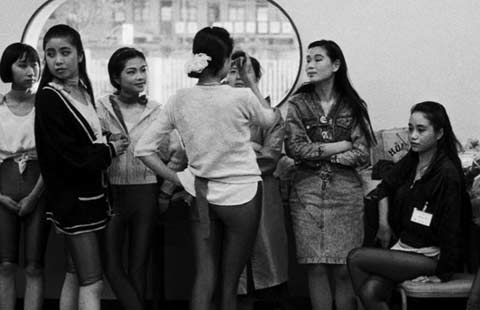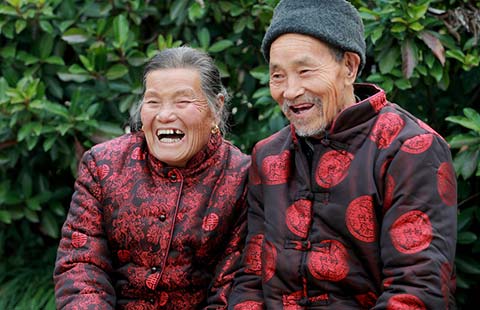
|
The first phase of Kilamba Kiaxi, a $3.5 billion social housing project on the southern suburbs of Luanda, has been constructed by China's Citic Construction Co. Xinhua News Agency |
After more than 40 years of war, Angola is winning the peace, and Chinese boots are on the ground
For generations, Angola epitomized some of the world's worst woes: poverty, disease, starvation, maimed people and creaking, run-down infrastructure. Much of this, as well as bullet-riddled buildings and rusting, abandoned tanks and armored vehicles strewn across the land, were the direct consequences of a war that lasted 41 years. In 2002, those years of conflict finally drew to a close, and though the country and its people still nurse deep scars, the past 12 years have been transformative.
Driven by a booming oil industry and post-war reconstruction, a new, confident Angola has emerged, with double-digit economic growth for most of those years, making the country one of the fastest growing economies in the world.
In the war years, wide swaths of the country were reduced to ruin, and much of the population lived in conditions of subsistence, with the most basic of food - and very little of it - a dearth of drinking water, no electricity and barely any medicine or medical care.
When peace finally came, President Jose Eduardo dos Santos and his ruling Popular Movement for the Liberation of Angola hammered out a policy of unity, reconciliation and reconstruction, which has almost become a mantra and has helped the country turn into a rising political and economic heavyweight in the region. Angola rivals Nigeria as the largest oil producer in Africa, producing between 1.7 million and 2 million barrels a day, and it is petrodollars that have fueled the country's rebirth and reconstruction since 2002.
The government has spent billions of dollars to build or renovate roads, harbors, airports, railways, power plants, social housing projects, factories and schools. Reconstruction can be seen everywhere. Dos Santos has often said the whole of the 1.2 million square kilometer country has become a construction site, and that pronouncement is not much of an exaggeration.
International civil construction giants flooded in soon after the war ended, and about 50 state enterprises and more than 500 private companies from China have operated in the country, with more than 20,000 Chinese expatriates working in labor-intensive infrastructure construction and rehabilitation. The capital, Luanda, planned by Portuguese colonists to accommodate 350,000 people, is now home to 6.5 million, nearly one third of the country's population, most of whom fled there from other provinces in the war years. Many live in slums in the city's east and west.

To solve an acute shortage of housing and to promote socio-economic development, the government decided in 2008 to build 1 million homes as part of a national social housing project, to rebuild Luanda and to build a satellite city in the Kilamba Kiaxi district in the capital's southern suburbs. After four years' construction, the first phase of the social housing project in Kilamba Kiaxi, costing $3.5 billion, was completed last year. The result is a satellite city that stands on what used to be unused land in Kilamba Kiaxi.
There are 710 high-rise buildings, including 20,000 apartments, 24 nurseries, 18 primary and middle schools, 400 kilometers of new roads, drainage and waste water treatment plants, power supply and communications systems, parks and gardens, churches, police and petrol stations, and service and business facilities.
Seventy thousand people have moved in, and there are more than 3,200 students at schools in the new city, whose order contrasts sharply with bustling and often chaotic downtown Luanda. Dos Santos conducted many inspection tours of Kilamba Kiaxi when it was being built, and often lauded it as a jewel in the crown of post-war reconstruction. It could serve as a model for rebuilding for the rest of the country, he said.
Dozens of heads of state and government officials have visited the new city.
The Kilamba Kiaxi project is divided into three phases costing $10 billion and covers about 54 sq km, and 500,000 people will eventually live there. Citic Construction's work on the first phase was done with more than 20 Chinese state enterprises, and it has become a flagship for the Chinese workforce in Angola. As a result of the company's success, Dos Santos has invited it to take part in urban development planning for the country, says Wang Jiong, Citic's general manager.
Liu Guigen, general manager of the Angolan project for Citic Construction, says the company is negotiating with the Angolan government to start a multi-billion-dollar pilot farming project involving scientific research, deep processing of agricultural produce and cotton and grain growing, as well as animal husbandry on 500,000 hectares.
"Angola needs 4.5 million tons of grain a year to feed its 20 million people, but at the moment it can produce only 1.5 million tons," Liu says. "Even with the 2 million tons that our project will be able to contribute, there will still be a shortage."
The restoration of the 1,300-kilometer railway, built in colonial times and destroyed by war, has been another focus of reconstruction efforts, carried out by the China Railway Construction Co and completed last month. The Angolan government spent $2.3 billion on the project. Zhang Zongyan, president of the railway company, visited Angola late last year to talk with government officials on building a 350-kilometer line to link the Benguela Railway, which runs from the port of Lobito on the Atlantic to the city of Luao on the eastern border, with the Tazara (Tanzania-Zambia) Railway, the final stop being Dar es Salaam, on the Indian Ocean.
Zhang says his company also hopes to move into other areas of the Angolan economy, including mining and farming, as the government tries to make the country less dependent on oil.
One private Chinese company active in Angola is Haishan International Trade Co Ltd of Sichuan province, which is building a university city in southern Luanda. Zheng Gang, Haishan's president, says the company is building a trading center in Luanda and introducing Chinese manufacturers into Angola to take part in industrialization. Angola is open to Chinese investors, new technologies and scientific know-how, Dos Santos has said. The visit to Angola by Chinese Premier Li Keqiang on May 8 and May 9 will usher in a new era in bilateral ties, says Basilio Cossoma, an economic adviser to the president.
"China is a key player in Angola's post-war rebuilding efforts, and Angolan leaders believe the safest foreign cooperation is from China, because Beijing has never laid down preconditions for collaboration and never meddles in the political affairs of other countries."
China Daily
(China Daily Africa Weekly 05/09/2014 page12)








